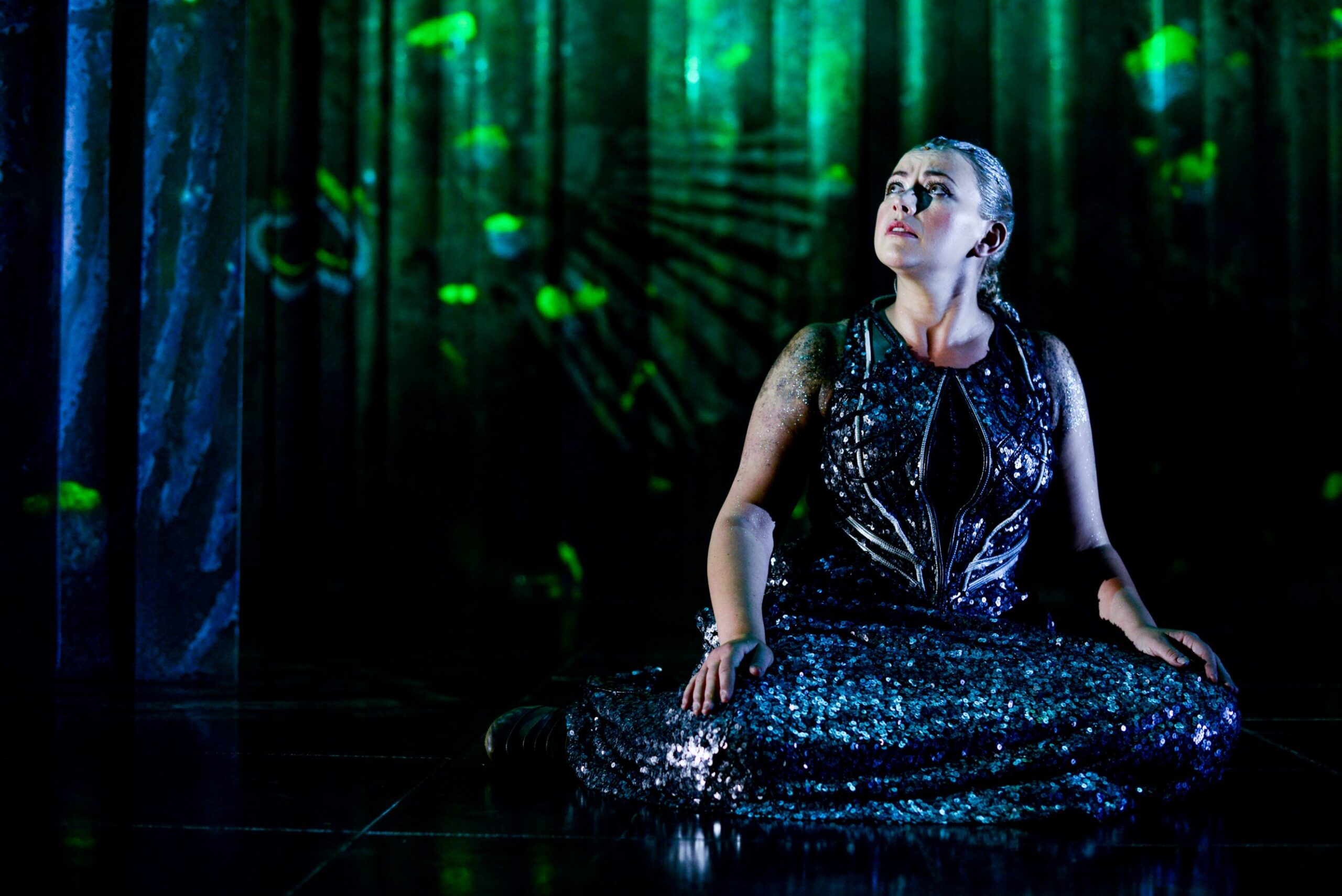
Charlotte Church performing in The Last Mermaid
Photo: Kirsten Mcternan
Land of song
Cardiff’s first international festival celebrated what Wales is most famous for – the human voice. Graeme Farrow reflects on the launch of the biennial cultural event.
When I took up the post of Creative Director at Wales Millennium Centre (WMC) two years ago, I was struck by the absence of a major international arts festival. The idea for Festival of Voice was not merely to plug a gap but for Wales to reaffirm itself inwardly, and proclaim itself outwardly, as a ‘Land of song’.
For audiences initially I think that it was hard to take it all in, but the large audience from inside and outside Wales welcomed and embraced it
Professor Gareth Williams of the University of South Wales has encapsulated why the voice became so important: “When the rural migrants poured in to the mining valleys they brought with them their culture, their language, their non-conformist religion, and their fondness for lusty congregational singing. In their unfamiliar new surroundings, they found solace and sociability in song. For in a materially poor society the voice was the most dramatic of instruments; it cost nothing, as even the cloth-eared have a larynx.”
I took inspiration from the poet Gwyneth Lewis’ inscription on the front of our building ‘In These Stones Horizons Sing’. As a national cultural centre, WMC has a responsibility beyond its stones and the festival sought to broaden horizons through all forms of vocal expression – hip-hop, opera, dance, folk, drama, Afro-pop, poetry, soul, cabaret and choral music.
A Welsh showcase
This was a showcase for Welsh singers such as Gwenno, Charlotte Church and Bryn Terfel, as well as for stars coming home to Wales like Green Garside of Scritti Politti and the Velvet Underground’s John Cale.
Among our co-productions, National Theatre Wales delivered a play about a dementia choir that celebrated the healing power of song with new work from the Manic Street Preachers, while with Welsh National Opera we took both Poulenc’s La Voix Humaine to a modern apartment in Penarth and arias out into the streets for a weekend.
Much more than a series of great concerts, the festival featured seven world premieres of new commissions and co-productions. Charlotte Church’s The Last Mermaid was an unexpected cosmic feast for the senses, as one of our most celebrated artists stretched herself and her collaborators to provide a darkly modern twist to Hans Christian Andersen’s classic fairytale.
On a slightly smaller scale, with international visual arts festival curators Artes Mundi, we commissioned a powerful voice work from Beirut artist Lawrence Abu Hamdan, while Shetland folk musician and composer Inge Thomson took inspiration from ‘Voices from the Factory Floor’, a collection of accounts and images from the Women’s Archive of Wales.
Celebrating the voice
This festival wasn’t a celebration of Welshness, but a celebration of the one instrument we all share in the world, the most immediate and accessible instrument. It was a resolutely outward-looking international festival that celebrated togetherness.
It wasn’t about who is the best singer, but about the different emotions these artists stir within us, and about giving voice. So we heard thousands of primary school children singing Roald Dahl songs and community choirs participating all over the city in a Choir Clock marathon.
The first festival
Launching a festival is difficult, as there is no instant brand recognition. Our festival is to be biennial in order to give adequate planning time for new commissions and productions, and to develop projects with artists.
The second festival will be about stretching the horizons further and about building its reputation nationally and internationally. We are already discussing projects with artists and partners.
For audiences, initially I think it was hard to take it all in, but the large audience from inside and outside Wales welcomed and embraced it within an atmosphere of warmth and a spirit of adventure. Just under 20% of ticket buyers came from outside Wales so when the pennies are counted and the economic impact calculated, the arts will prove once more the full range of potential benefits they can offer.
Festival of Voice got off to great start, and as it beds down into Wales’ cultural calendar over the years to come, I hope that it unites and inspires, and captures Cardiff and Wales’ thriving cultural landscape as we continue to increase our creative imprint on a global stage.
Graeme Farrow is Creative Director of Wales Millennium Centre.
www.wmc.org.uk
Join the Discussion
You must be logged in to post a comment.